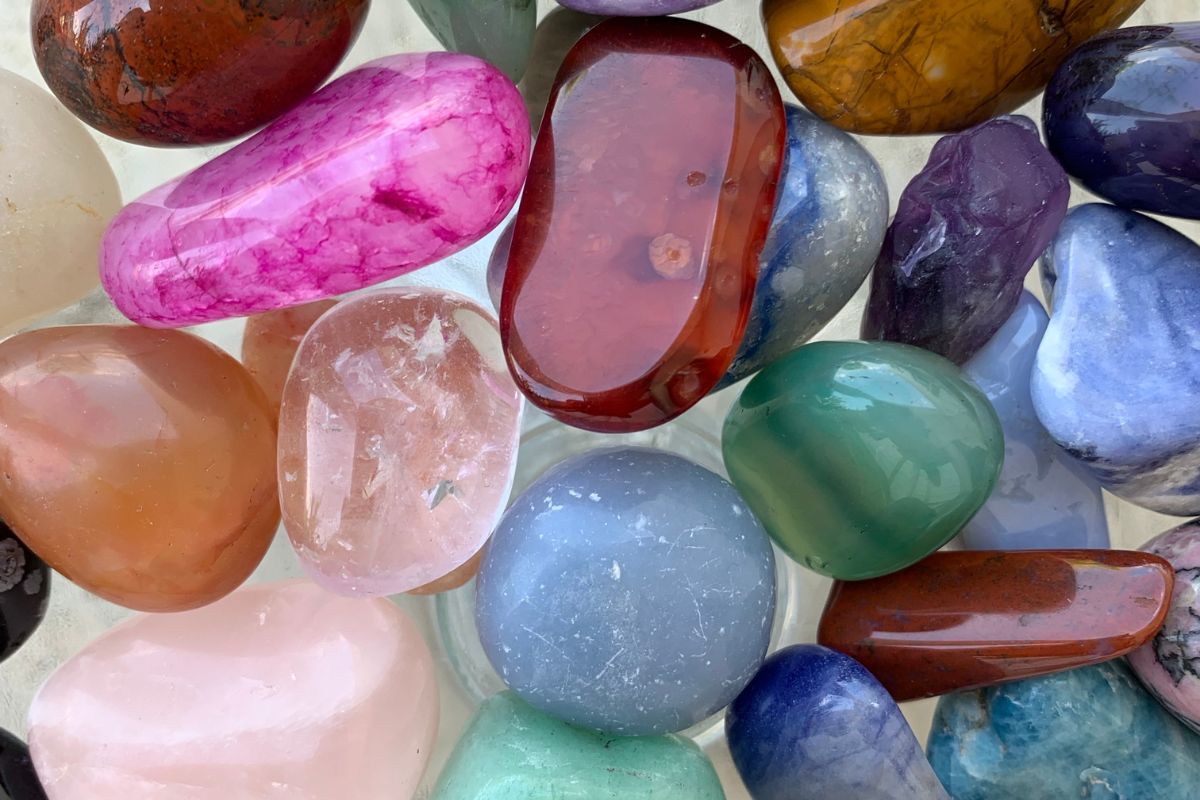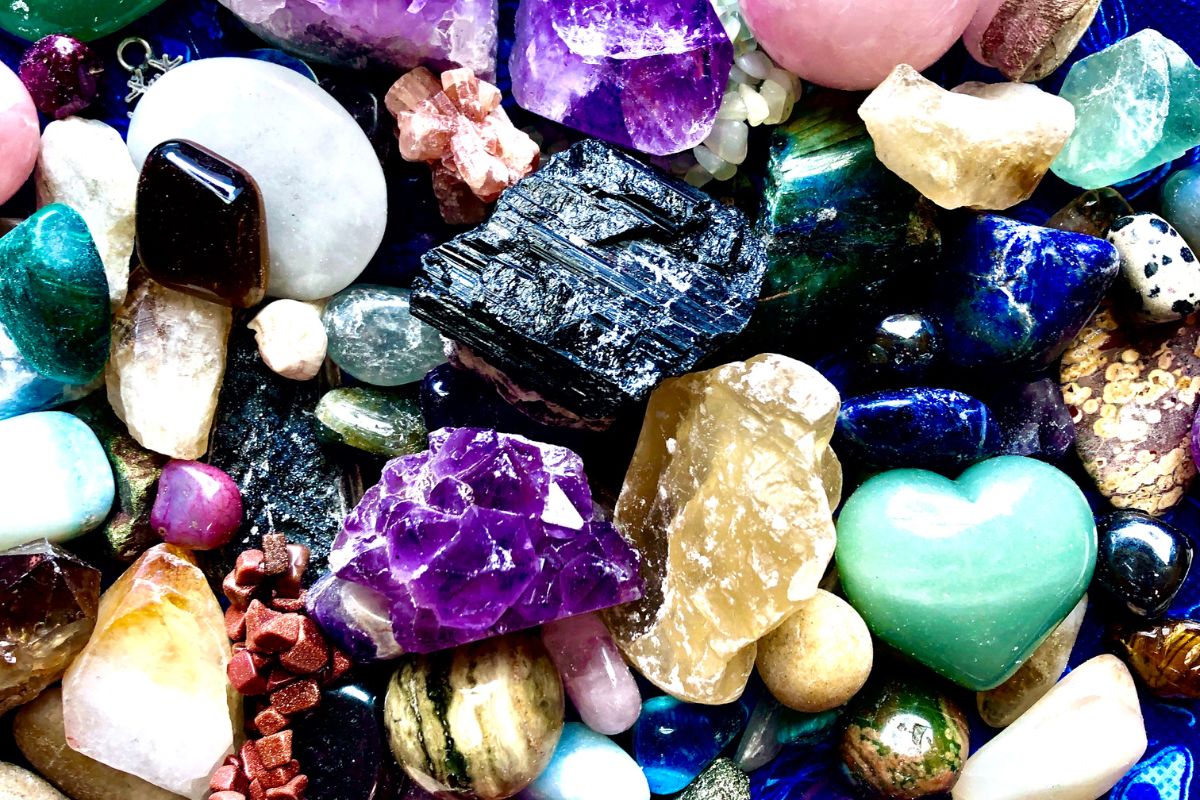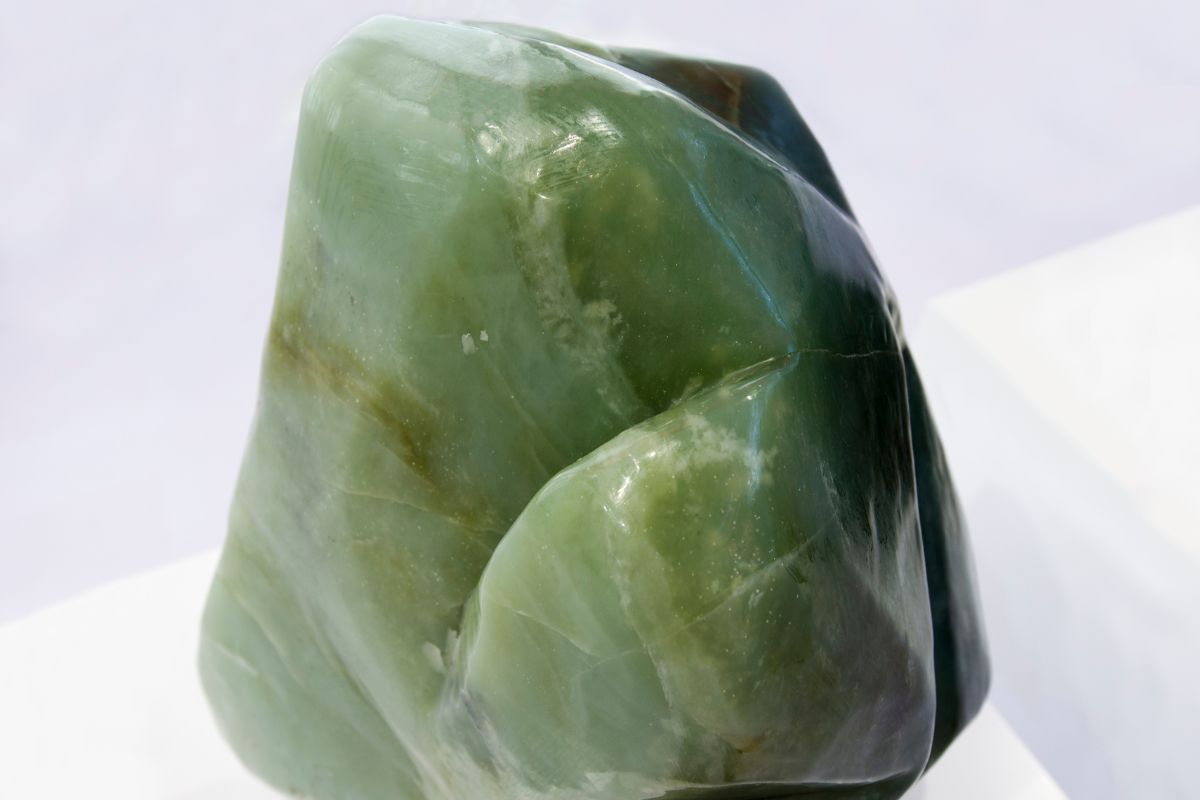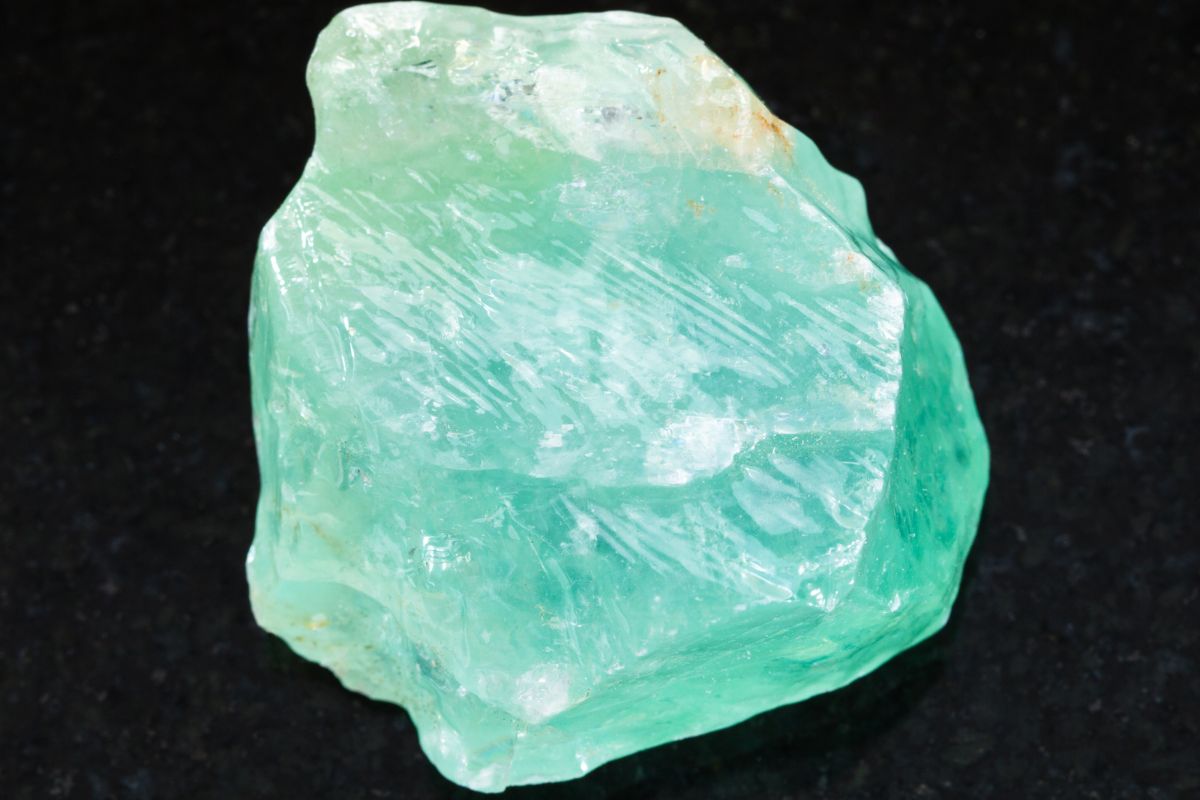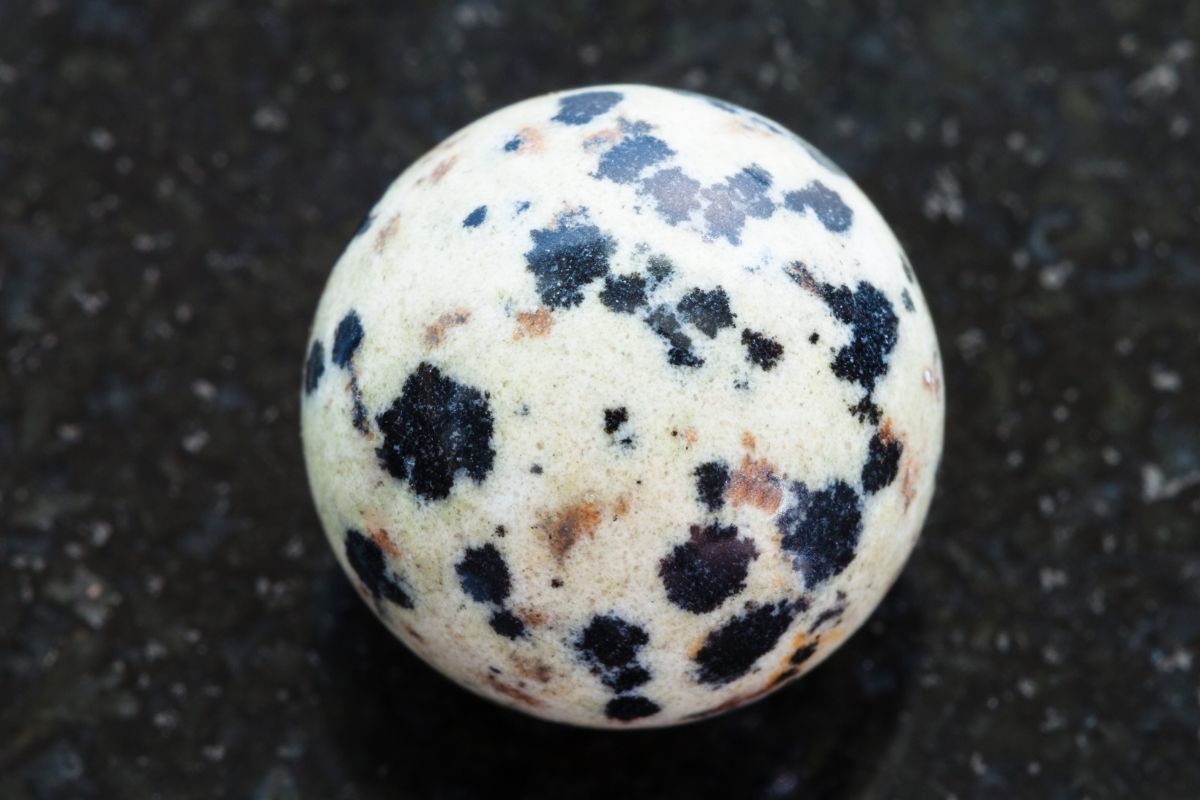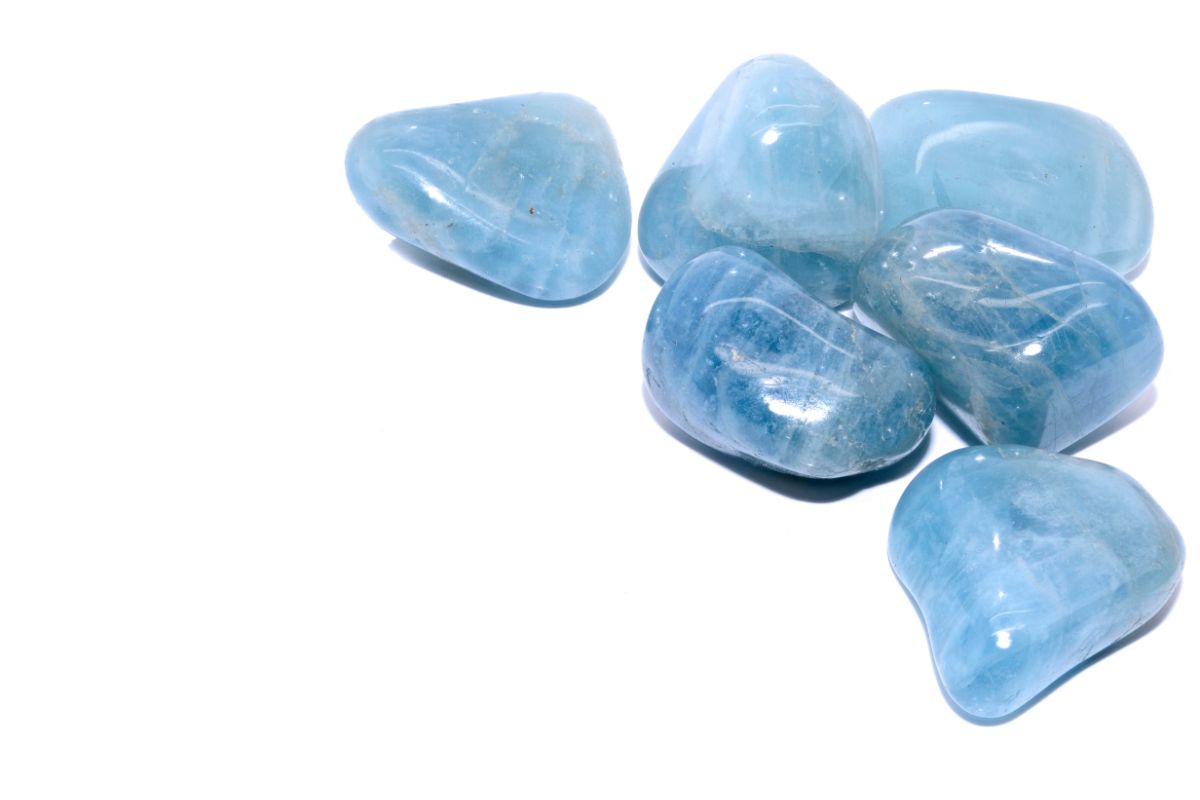Two popular gemstones that often get mistaken for each other are carnelian and amber. Used for their durability and beauty for many centuries, these stones are highly recognizable thanks to their rich, warm colors and distinctive properties.
But, although they look similar, they are unique in several ways.
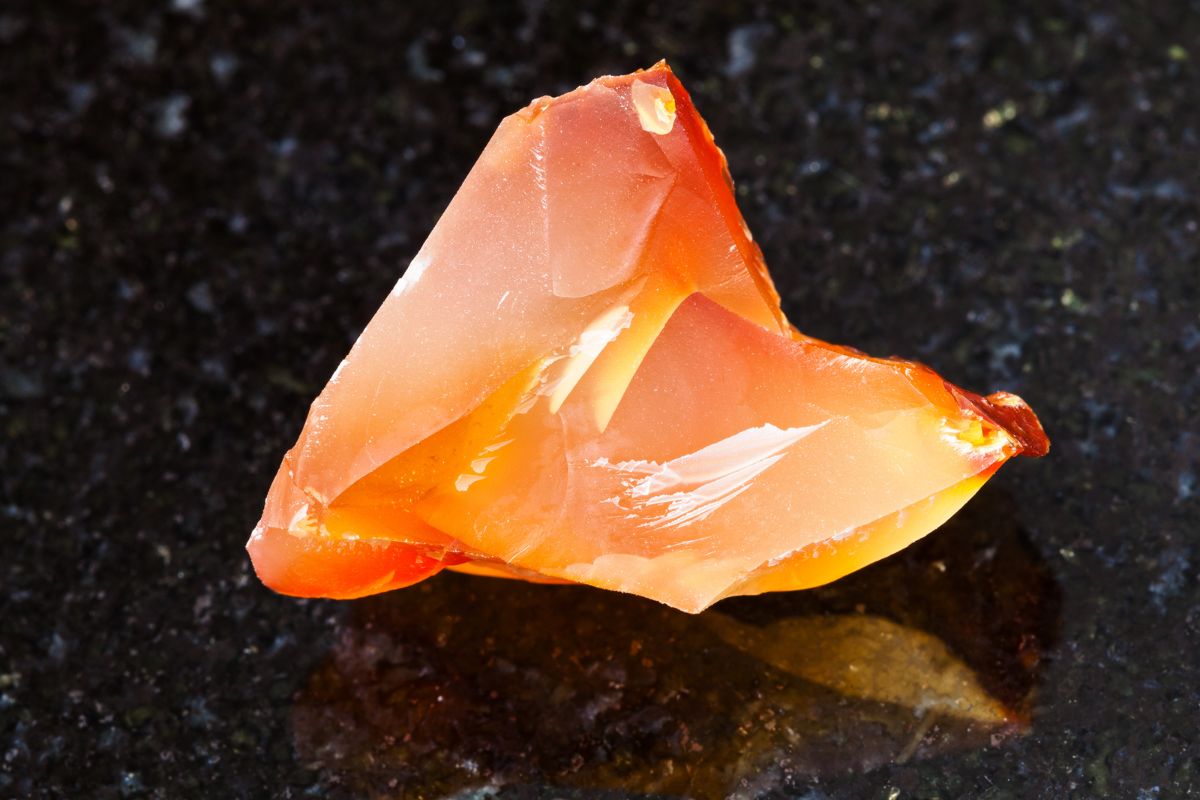
Want to find out more about carnelian and amber? You’re in the right place as we have compiled this guide on facts, uses, and much more regarding the two gemstones.
We’ll also explore how they differ from each other, so you never mistake one for the other again.
Carnelian – What is it?
Carnelian is a semi-precious gemstone and a member of the silica mineral family. Often referred to as a “kind of chalcedony,” carnelian is known for its reddish, brown tone (although its shades can vary due to iron oxide combined but not bonded with the silicon dioxide).
It can also be found in very light colors or an almost black tone.
More often than not, this gemstone is opaque but, contrary to what many believe, it is not translucent#. Many compare carnelian to sard, another semi-precious gemstone, but sard is typically darker and harder.
Many experts argue that carnelian is most similar to jasper, agate, and other reddish-colored versions of silicon dioxide. This is because they are practically identical on a molecular level, but whether they are considered the same is still up for debate.
Where Is Carnelian Found?
Most commonly, carnelian is found in India, but it is mined across the world in countries such as Brazil, Uruguay, and Egypt.
Because these gemstones are mined in many regions worldwide, they are not considered all that rare. Therefore, they can be picked up for extremely affordable prices, especially when compared to other similar looking gemstones.
Carnelian Uses
Carnelian has been used since ancient times for its beauty and as a talisman for protection and courage.
In addition to its aesthetic value, carnelian is also believed to have healing properties and has been used in traditional medicine for thousands of years. It is frequently used in crystal therapy to help calm emotions, such as frustration and anger.
Carnelian is also widely used to help in the healing of the heart chakra. Because it is an extremely strong stone for the Sacral Chakra, it is believed to improve passion between people in relationships and can even help fertility.
Crystal therapy using carnelian is regularly used to protect us from physical harm and avoid physical harm. It can stop us worrying about “what ifs,” and live in the present.
That is why many believe in its abilities to help with decision-making and increase motivation, vitality, and creativity.
Amber – What Is It?
Unlike carnelian, amber is not a part of the chalcedony family. Amber is essentially tree resin that has been fossilized. Whilst it may look very similar to members of the silicon dioxide family tree, it is very different in its makeup.
Amber is known as a heterogeneous mixture. This means it is a material that is chemically inconsistent and composed of various substances that are not bonded to one another.
When it comes to amber, the substances are organic compounds, such as oils, acids, hydrocarbons, and resins. Many examples of amber will also contain plant and bug matter, too.
Like carnelian, amber can come in a wide range of colors, from orange-brown shades to yellowish gold tones. But, you can also find red, green, and blue amber.
So, how is amber formed? Resin is produced by trees to help block gaps in the wood, and when resin is exuded from the bark of a tree, it can harden over time.
As it covers a break in the tree’s surface, usually caused by insects, it will then harden and seal the damage.
Over millions of years, the resin would undergo a process of polymerization, becoming harder and more durable until it eventually became fossilized amber.
As it hardened, it could perfectly preserve anything that was encompassed inside it, such as insects and plants.
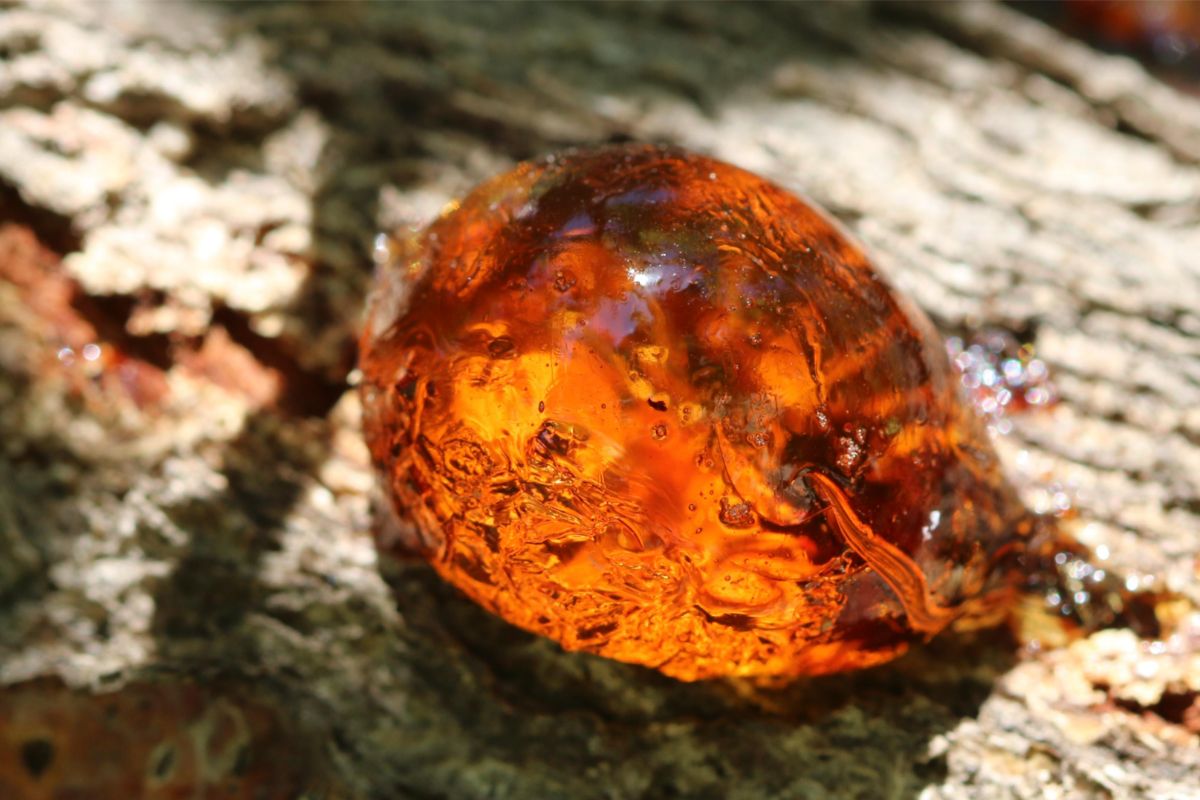
Where Is Amber Found?
Amber can be found in many regions throughout the world. However, its largest deposits tend to be found in the Dominican Republic, Myanmar (formerly known as Burma), and the Baltic region of Europe, such as Poland.
In the Dominican Republic, this fossilized resin is exploited for science and jewelry, which is often sold around the world.
Amber is typically found in areas where there were once large forests of resin-producing trees.
The largest deposits of amber are found in the Baltic region, where there were extensive forests during the Eocene and Oligocene epochs, somewhere around 34 to 23 million years ago.
The specific conditions required for amber to form and fossilize make it a pretty rare and valuable gemstone.
Amber Uses
Amber is typically used for decorative purposes, or for jewelry. This is nothing new, though, as evidence shows that amber has been used as jewelry since the Stone Age and continues to sell very well worldwide today.
Amber is also used for its healing properties and has been implemented in traditional medicine for its pain-relieving and anti-inflammatory effects for thousands of years. It is also thought to have a calming and balancing effect on the mind and emotions.
Leo-born people are said to have the Amber stone as their astrological birthstone, too, with amber matching their bold energy, and help them balance their emotions.
It is believed that amber connects us with nature and the cycles of rebirth, filling our spirits with calm, beautiful energy.
In Summary
Although carnelian and amber have similar appearances, they are very different in terms of their properties and how they are formed. Carnelian is an inorganic substance, whereas amber is formed from a living thing.
Therefore, they couldn’t be more different in scientific terms. Nevertheless, both have unique uses, but can help protect us from harm, both physically and emotionally.
- 15 Crystals That Cannot Be Exposed To The Sun - January 7, 2024
- Malachite Vs Fuchsite – Benefits And Uses - January 7, 2024
- Malachite Vs. Green Jasper: Benefits And Uses - January 7, 2024



